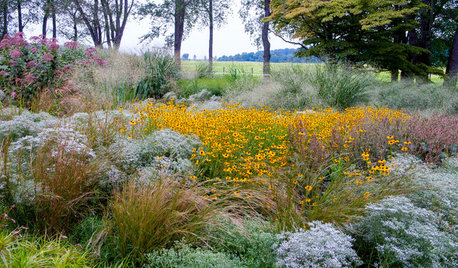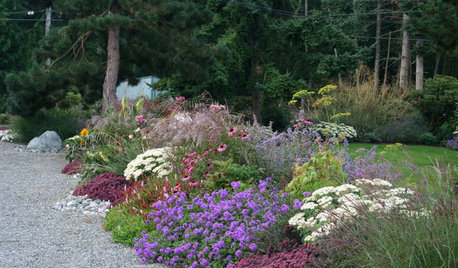willow mulch good or bad for hosta?
almosthooked zone5
11 years ago
Related Stories

GARDENING GUIDESNew Ways to Think About All That Mulch in the Garden
Before you go making a mountain out of a mulch hill, learn the facts about what your plants and soil really want
Full Story
GARDENING AND LANDSCAPINGBid Bad Garden Bugs Goodbye and Usher In the Good
Give ants their marching orders and send mosquitoes moseying, while creating a garden that draws pollinators and helpful eaters
Full Story
GARDENING GUIDESThe Surprising Ingredients Every Good Garden Should Have
See what to do — and not do — for lasting rewards in your landscape
Full Story
LANDSCAPE DESIGN15 Great Ideas for a Lawn-Free Yard
End the turf war for good with hardscaping, native grasses and ground covers that save water and are easier to maintain
Full Story
MOST POPULARMeet a Lawn Alternative That Works Wonders
Carex can replace turfgrass in any spot, is low maintenance and adjusts easily. Add its good looks and you’ve got a ground cover winner
Full Story
MOST POPULARHow to Design a Colorful Flower Bed
Fall planting: Delight the eye through 3 seasons with bright flowers placed just right. Late summer is the time to plan
Full Story
LANDSCAPE DESIGNGet Your Garden Moving for a Magical Mood
Use wind, water and wild creatures to add dimension and life to your landscape
Full Story
FALL GARDENING5 Ways to Put Fall Leaves to Work in Your Garden
Improve your soil and yard the organic way with a valuable garden booster that grows on trees
Full Story
GARDENING FOR BUTTERFLIESButterfly Gardening: Delight the Eyes With Living Sculptures
Surprise and thrill with a garden that attracts magical winged creatures, bringing color, movement and life
Full Story
MONTHLY HOME CHECKLISTSYour Fall Home Maintenance Checklist
Prep your house and yard for cold weather with this list of things to do in an hour or over a weekend
Full Story







ken_adrian Adrian MI cold Z5
almosthooked zone5Original Author
Related Professionals
Arlington Landscape Contractors · Cockeysville Landscape Contractors · Dunwoody Landscape Contractors · Fairfield Landscape Contractors · Libertyville Driveway Installation & Maintenance · Royal Oak Driveway Installation & Maintenance · Castro Valley Fence Contractors · Irvine Fence Contractors · Kansas City Fence Contractors · La Canada Flintridge Fence Contractors · Lakewood Fence Contractors · Rutherford Fence Contractors · Van Nuys Fence Contractors · Albany Solar Energy Systems · Lynn Solar Energy Systemsgogirlterri
ken_adrian Adrian MI cold Z5
in ny zone5
tsugajunkie z5 SE WI ♱
almosthooked zone5Original Author
ken_adrian Adrian MI cold Z5
ken_adrian Adrian MI cold Z5
in ny zone5
dougald_gw
almosthooked zone5Original Author
ken_adrian Adrian MI cold Z5
almosthooked zone5Original Author
User
ken_adrian Adrian MI cold Z5
donrawson
Babka NorCal 9b
gogirlterri
donrawson
donrawson
tsugajunkie z5 SE WI ♱